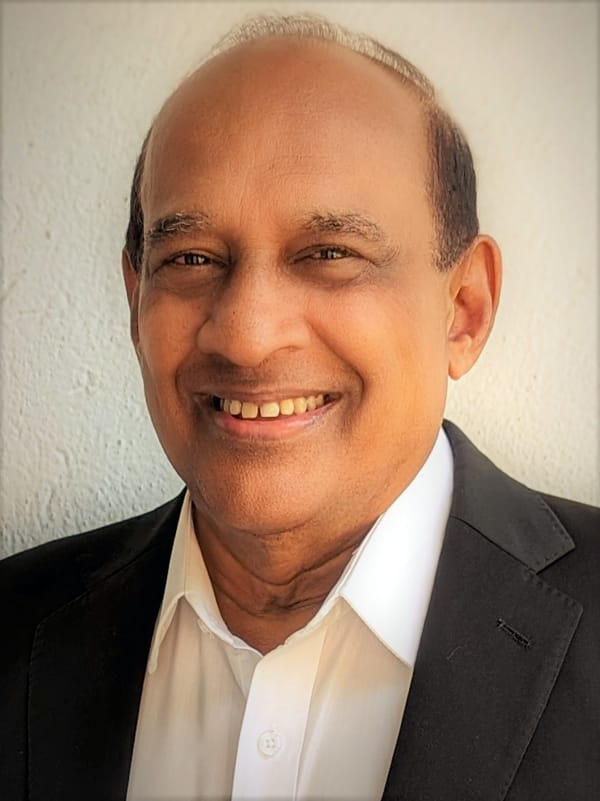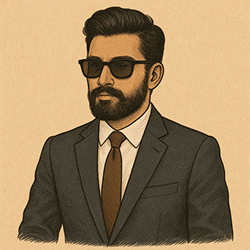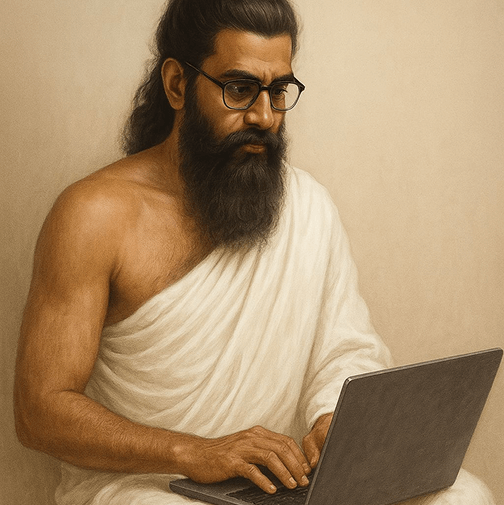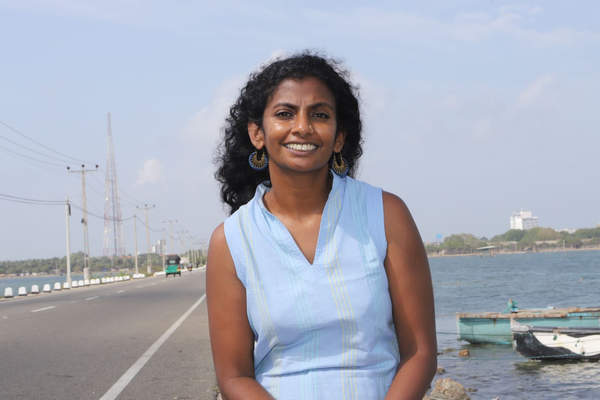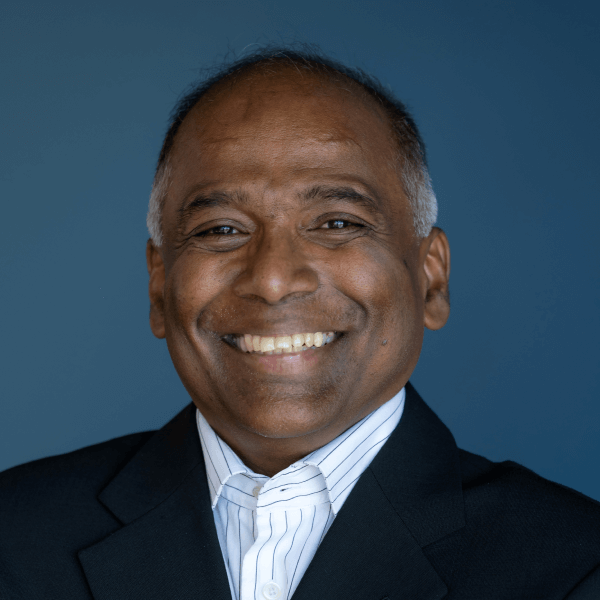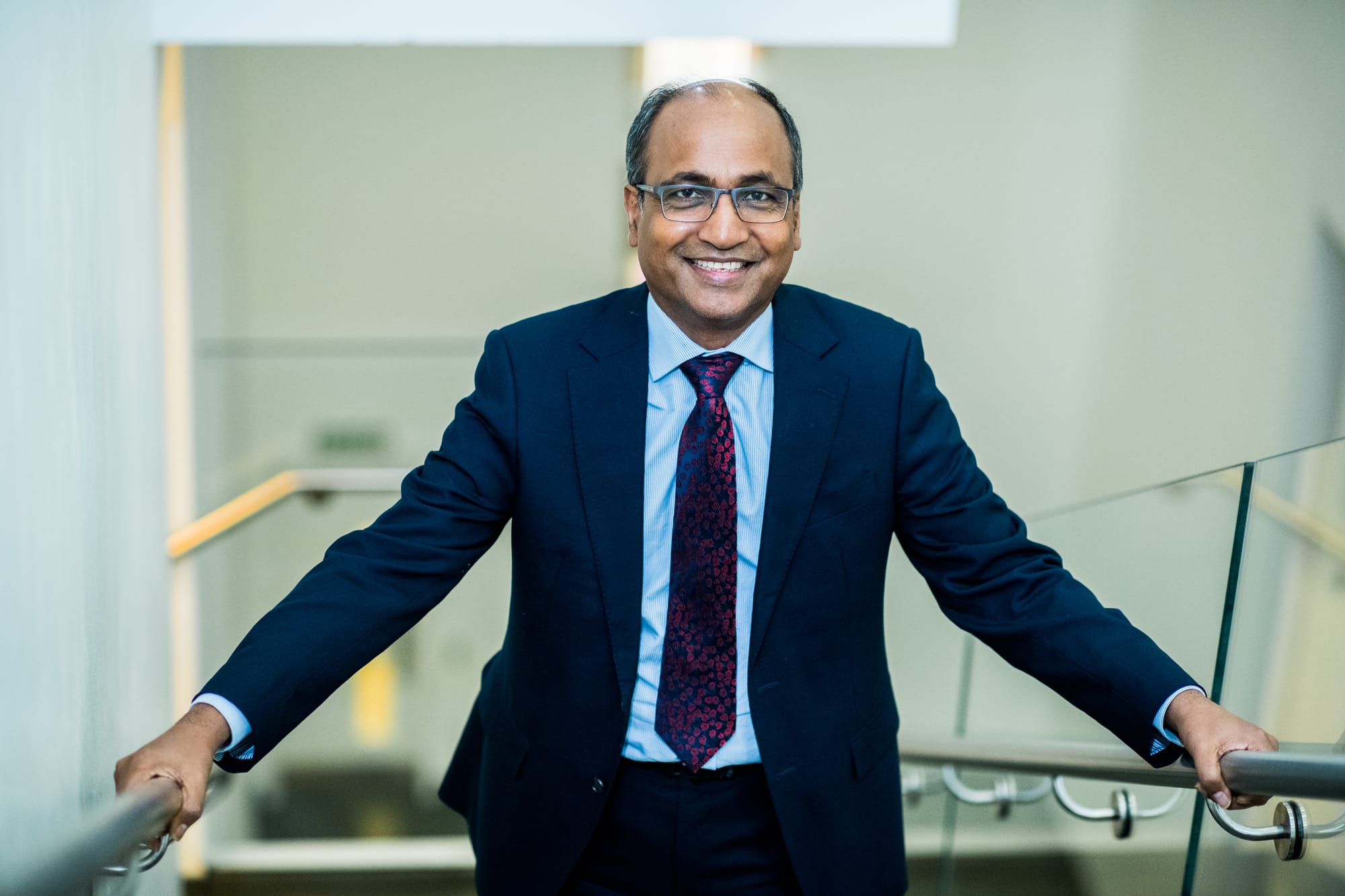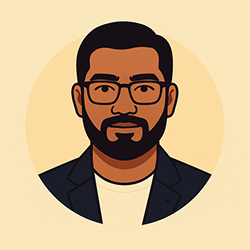What drives a surgeon born into a well-to-do Colombo family, educated at prestigious schools, and trained in Manchester’s finest hospitals, to choose rural Polonnaruwa as his first consultant posting? For Dr. Gamini Goonetilleke, the answer lies in his daredevil spirit—a trait that has defined his extraordinary four-decade career and continues to shape the man he is today.
While most surgeons sought comfortable urban postings, Dr. Goonetilleke made a deliberate choice—to become the sole surgeon serving 260,000 people in rural Polonnaruwa, immediately upon returning to Sri Lanka from his mandatory foreign training. The scene shifts from Manchester’s gleaming hospitals to a dusty rural hospital. He brought his family with him, enrolled his children in local schools, and traded prestige for purpose.
His fearless nature reached new heights in 1994 when he accepted an invitation to enter LTTE-controlled Jaffna, becoming the first Sinhala doctor to visit the war-torn peninsula in 12 years. While others feared for their safety, Dr. Goonetilleke saw an opportunity to serve and teach. He even attended the LTTE’s Maaveerar Naal commemorations—likely the only Sinhalese citizen ever to do so in rebel-held territory.
Perhaps most remarkably, Dr. Goonetilleke is arguably a pioneer of medical documentation in Sri Lanka. Armed with a simple Olympus Trip 35 camera and precious rolls of 35mm film, he meticulously photographed and recorded everything—from rare tropical diseases in Polonnaruwa to the devastating war injuries of the civil conflict.
This lifelong commitment to preserving medical knowledge has resulted in several groundbreaking books: In the Line of Duty: The Life and Times of a Surgeon in War and Peace, The Extra Mile: A Surgeon’s Experiences and The Healing Cut: Extraordinary Surgical Triumphs—volumes that serve as both medical testimony and historical record of a nation’s struggle.
Dr. Goonetilleke’s story proves that the most valuable medical contributions often come not from playing it safe, but from the courage, compassion, and unwavering commitment to go where others won’t. This is Jaffna Monitor’s exclusive interview with him.
You've often spoken with deep emotion about your time in Jaffna. Could you share what shaped your personal connection to the city and its people? How did your trust in a war-ravaged place begin to take root?
My personal connection to Jaffna began with my first visit in November 1994, when my friend Dr. M. Ganesharatnam, FRCS—the only consultant surgeon at Jaffna General Hospital and, at the time, the sole surgeon serving the entire peninsula—invited me to serve as an external examiner. The city was under LTTE control, and very few from the South dared to make the journey.
I accepted the invitation to support the doctors and medical students there, and what I encountered was a resilient community of professionals and civilians striving to preserve life amidst the devastation of war. I stayed for two weeks, moving freely within the city, meeting doctors, hospital staff, and ordinary people. There were no barriers between us—we shared the same professional values and a common humanity that transcended the lines of conflict.
The trust I developed grew through genuine human connection. Despite dangers and visible war scars, the people of Jaffna welcomed me. Their warmth, openness, and resilience gradually dismantled invisible walls between us. I came to understand that even in war-ravaged places, trust could take root when met with sincerity and respect. It wasn't just about providing medical assistance; it was about listening, understanding, and being fully present.
What were your initial thoughts and emotions upon receiving the invitation, and what gave you the courage to enter rebel-held territory?
What struck me immediately was that Dr. M. Ganesharatnam’s invitation hadn’t been extended to others—not even to those originally from Jaffna. He knew I had a daring streak and a long-standing interest in visiting Jaffna, but even so, the request caught me off guard. I didn’t respond right away. My first concern was simple but serious: personal safety. I was being asked to travel into rebel-held territory—an area cut off from the rest of the country and fraught with uncertainty.
When I raised these concerns, he responded with quiet assurance:
“Gamini, when I invite you to Jaffna for an important official purpose, it’s done with the full approval of the SUPREMO. Once he gives his blessing, your safety is guaranteed.”
I knew exactly who he meant by “the Supremo,” though I didn’t ask for details. His words eased some of my fears—but only to an extent. My next question was practical: How would I even get there?
“Leave it to me,” he said. “I will arrange everything.”
With that promise and some measure of confidence in place, my curiosity deepened—and I agreed to make the journey, even before informing my family. Soon after, an official letter arrived from the Dean of the Faculty of Medicine, University of Jaffna, formally appointing me as an external examiner. It also stated that all logistical arrangements would be coordinated through the International Committee of the Red Cross (ICRC).
My journey to Jaffna began with my wife, Shelendra, accompanying me to the ICRC office. She stood by me in silence until I boarded the bus—her stillness speaking louder than words. I avoided her eyes, knowing exactly what she wanted to ask but couldn’t: Would I return? As the bus pulled away, our eyes met one last time. I raised my hand in farewell, leaving her in quiet anguish. Doubt surged through me—Was I being reckless? But by then, there was no turning back.
We traveled by bus to Trincomalee, then boarded a ship bound for the Point Pedro Jetty. Though sailing under the ICRC flag offered some protection, the possibility of a Sea Tiger attack haunted the night crossing.
In Jaffna, I was accommodated at the Subhas Hotel. The manager personally ensured my comfort, but I was alone in a 30-room hotel. That first night was the hardest. I was the only Sinhalese man in a rebel stronghold, unable to speak Tamil. Fear sat heavily on my chest.
What if they came for me? What if I vanished without a trace?
The staff did their best to reassure me, but the unease lingered—quiet, persistent, and impossible to shake. There was no way to contact my family, so I was immensely grateful that the ICRC had sent word of my safe arrival.
I triple-locked the door that night, exhausted yet alert, my mind racing through every possibility. I was alone—but not defeated. I had come for a reason. Tomorrow, I would walk into Jaffna General Hospital as an examiner. I had come this far—and I would see it through.
What were the most visible—and invisible—challenges faced by the Jaffna Medical Faculty and hospital staff?
They faced extraordinary challenges. Most obvious was physical damage to hospital and faculty buildings from ongoing conflict. Destroyed power lines left the hospital dependent on unreliable generators amid severe fuel shortages.
There was critical shortage of human resources—specialists, junior doctors, nurses, and support staff. Essential surgical equipment, medication, and medical supplies were scarce, having to be transported from Colombo under extremely difficult and dangerous conditions. Poor infrastructure maintenance and frequent equipment breakdowns further compromised patient care, with no means for timely repairs or replacements.
A less visible but equally damaging challenge was the academic vacuum created by faculty migration to safer environments. This exodus left serious gaps in medical education and training.
The hospital was perpetually overcrowded, being the sole tertiary care center serving the entire Jaffna peninsula. Transporting patients posed another major challenge due to limited availability of ambulances, buses, and other vehicles.
Despite these formidable challenges, what was truly remarkable was the resilience and adaptability of Jaffna's people. Their ability to continue functioning under such dire circumstances was beyond anything I had imagined.
What were some of your most memorable encounters with the LTTE during your time in Jaffna?
My first LTTE encounter was with the boatman who ferried us from the ICRC ship Flamboyan to shore. On the jetty, I met two female LTTE cadres who sternly pointed to a 'No Photographs' sign when I smiled at them. I respected their warning but discreetly captured their photo from behind as they walked past.
At immigration, LTTE officials in administrative uniforms treated me courteously, issuing a pass without questions. Two junior doctors with LTTE connections escorted me from Point Pedro jetty to Jaffna in an old Austin A55 with LTTE plates, running on kerosene.
Despite initial apprehension at multiple checkpoints, I was clearly treated as a special guest in 'Tiger Land.'
Within the hospital and Medical Faculty, LTTE presence was minimal except for a dedicated ward for casualties. Despite language barriers, injured cadres willingly posed for photographs. At Jaffna Fort, under LTTE control, I was allowed entry but firmly warned against photography—a rule I followed.
One morning at the Subhas Hotel, the receptionist showed me the LTTE newspaper Eelanatham, pointing out my name—recognizing me as the first Sinhala doctor from the South to visit Jaffna in 12 years. This carried an unspoken message about crossing battle lines to teach medical students and work at Jaffna General Hospital.
The most astonishing experience was witnessing Maaveerar Naal (Hero's Day) celebrations—grand commemorations for fallen LTTE cadres with colorful pandals, cut-outs, oil lamps, and processions. I was formally invited to the main event at Kopay Maveerar Thuyilumillam (War Cemetery), attended by thousands including baby tigers, female cadres, sea tigers, and suicide bombers.
The Hero’s Day speech was delivered by none other than Pottu Amman, the LTTE’s intelligence chief. In that vast sea of LTTE fighters, I stood out—very likely the only Sinhalese citizen ever to attend such an event in rebel-held territory.
Another memorable encounter involved two Chilaw fishermen held as prisoners after their boat drifted into rebel waters off Mullaitivu. Brought to Jaffna Hospital for treatment while in custody, I befriended them and worked through ICRC leadership to secure their release. The LTTE eventually freed them—possibly a humanitarian gesture appreciating my work with the Medical Faculty.
What set you apart from many others was your meticulous documentation—at a time when taking and developing photographs was no easy task, especially in a war zone. You even risked your life to capture images, including in restricted areas such as the LTTE ward and the Jaffna Fort. What compelled you to document everything so thoroughly, despite the risks involved?
I’m not a professional photographer and had never owned a camera until my visit to the UK for surgical training. My first camera was a simple but reliable Olympus Trip 35.
My photographic journey began when I returned to Sri Lanka as a qualified surgeon and was posted to Base Hospital Polonnaruwa. There, I encountered surgical conditions rarely found in medical textbooks. I quickly realized the importance of capturing these rare clinical presentations. With my pocket-sized camera and precious rolls of 35mm film brought from Colombo, I began documenting what I saw.
I discovered the truth behind the saying, “A photograph is worth a thousand words.” These images became invaluable educational tools for teaching and academic presentations.
When the North-East conflict escalated, I witnessed devastating war injuries—and I knew this was another chapter that demanded documentation.
During my 1994 visit to LTTE-controlled Jaffna, I even managed to bring my camera past rebel immigration. With special clearance, I was able to document both daily life and surgical work inside the conflict zone—capturing a unique visual record that would have otherwise been lost.
Through this journey, I’ve learned that documentation—whether through detailed records or photographs—is indispensable in medical practice. It enhances learning, preserves history, and provides powerful visual narratives that transcend words.
You’ve treated soldiers in Palaly and patients in rebel-held Jaffna—how did that ‘dual role’ shape your understanding of the Sri Lankan conflict?
It was unprecedented—to treat wounded military personnel at Palaly Base Hospital while also caring for civilians at Jaffna General Hospital. This dual responsibility placed me in a truly unique position. I was also involved in teaching and examining medical students at the Faculty of Medicine, University of Jaffna.
This rare role allowed me to engage closely with individuals on both sides of the conflict, offering an intimate, human-centered perspective on the war’s impact. It deepened my commitment to impartial humanitarian service. I remained neutral throughout, holding onto the hope that the violence would one day end, and that true reconciliation would bring unity and healing to Sri Lanka.
What message would you offer to young doctors today about the importance of serving in underserved areas? And how vital do you believe it is to document and preserve such experiences for future generations of healthcare professionals?
Serving in these areas requires a commitment that goes beyond the call of duty. It means being available at critical moments, taking risks, making bold decisions, and standing firm in the face of adversity to relieve suffering and save lives. These experiences tested my endurance, courage, and the very essence of the human spirit.
With the outbreak of war, I was suddenly thrust into a world of devastating injuries caused by machine guns, bombs, landmines, and improvised explosive devices.
With no formal training in war surgery, I had to learn quickly on the job. Saving lives in such critical conditions brought immense personal and professional fulfillment.
I urge young doctors to embrace these challenging assignments. There is no better training ground for developing resilience, broadening clinical expertise, and making a genuine difference in people’s lives.
Importantly, it is your responsibility to document these experiences truthfully.
Preserving the stories you witness—grounded in fact—will contribute to the profession’s collective memory and provide invaluable lessons for future generations.
How do you assess the current state of surgical services in Sri Lanka, and what reforms are needed?
Surgical services have significantly improved since I began as a surgeon in 1982. Then, I was the sole surgeon serving 260,000 people in rural Polonnaruwa, with war casualties intensifying challenges without increased staffing. Today, that hospital has evolved into a modern general hospital with two general surgeons, multiple sub-specialists, and 45 consultants—up from just three.
Despite these advancements, critical issues persist regarding policy and equitable access. Sri Lanka urgently needs a well-defined National Health Policy that all political stakeholders can agree upon and implement—free from ad-hoc, politically driven decisions.
To achieve equitable surgical care, comprehensive reform is vital. Human resource strengthening through task shifting—empowering non-surgeon medical officers to perform minor procedures under specialist supervision—should be prioritized. Rural-focused surgical training, tele-mentoring, and career incentives are essential to attract and retain staff.
Infrastructure improvements include upgrading select rural hospitals into essential surgical centers and deploying mobile surgical units to improve access and reduce waiting times. Service optimization through surgical outreach, optimized theatre scheduling, and community engagement can reduce waiting times and improve timely care.
Your latest book The Healing Cut: Extraordinary Surgical Triumphs has been described as both a visual and emotional journey through some of the most challenging moments of your surgical career. Could you tell us what inspired you to write this book?
The inspiration stems from cherished memories and profound experiences throughout my surgical career in Sri Lanka.
My surgical journey began in a rural district with scarce resources and limited personnel. Despite challenges, this proved the most demanding yet enriching phase of my career. Working under pressure and often beyond official expertise, I was driven to make life-saving decisions in critical situations—what I describe as 'walking that extra mile.'
A significant part of my career involved managing war casualties during Sri Lanka's civil conflict. I served in both civil and military hospitals, including combat zones, witnessing devastating injuries—some so severe they're not documented in standard surgical textbooks.
The book recounts life-threatening cases, complex surgeries, and unusual conditions where urgent decisions saved lives or improved quality of life. Many rare surgical encounters are carefully documented and supported by photographs taken during various treatment stages.
To provide a well-rounded narrative, I include a special chapter featuring exceptional incidents and moving patient experiences that left lasting impressions. These stories aim to inspire young doctors, especially those in difficult, under-resourced environments, to go beyond their comfort zones in caring for the sick and injured.
Ultimately, I am deeply grateful to God—whose grace gave me the courage and strength to serve, and to write this book. I hope these stories will inspire, educate, and resonate with readers—both within the medical profession and beyond—for years to come.
I'd like to end this interview with the profound words of George Bernard Shaw that have guided me throughout my journey: "You see things; and you say, 'Why?' But I dream things that never were; and I say, 'Why not?'"


